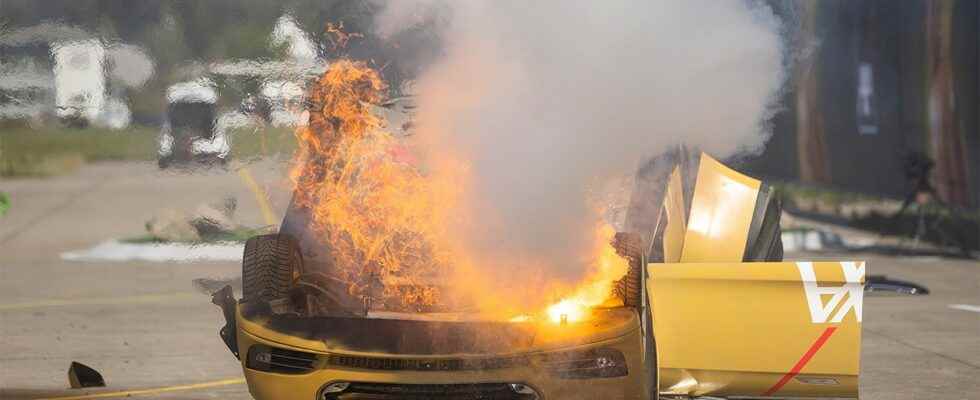Electric cars can easily catch fire in the event of an accident if the battery is damaged. Among other things, the Axa insurance company wanted to draw attention to this peculiarity of e-cars. But now it turned out: The photos of an accident presented do not show a real battery fire, but a fire that was specially ignited.
In order to point out the vulnerable underbody with the batteries placed there, the accident researchers simulated an accident that was triggered by the strong acceleration potential of the e-cars. The crash test scenario: the driver loses control of his vehicle when accelerating, runs over a traffic island and rolls over. Photos show the rollover and a fire on the floor of the car. So far, so good, but in the meantime it has become clear that not only was the fire ignited externally, the vehicles that crashed also had no batteries on board. The AXA press office admitted: “The demonstration of a battery fire (would have) been too dangerous due to the guests present, which is why the battery cells of the electric cars were removed before the tests”. She is repeating the same argument that was used to explain the pyrotechnically generated fire on the crashed Tesla Model S.Public crash test simulationThe pictures were taken as part of a public crash test simulation in Switzerland – an event that the insurance company regularly conducts, always under another road safety issue. This year it was all about the safety of e-cars – with the staging just described. In the accident, the passenger compartment remained intact, but the underbody was badly damaged. In this context, the Axa experts pointed out that mechanical damage to the battery can lead to the dreaded self-ignition of the battery and a fire that is difficult to extinguish. However, the pictures made available to the press did not show that the fire had been deliberately set. The lack of batteries was also not communicated. It is also unclear whether the weight of the batteries was compensated for by other deeply installed weights in the crash structure in order to make the driving physics of the cars comparable. To speak of a fake in the case of the fire staging would, however, miss the point. Rather, it is about illustrating a real problem. According to the current state of knowledge, electric cars burn less often than vehicles with combustion engines. However, battery fires can only be extinguished with great effort and large quantities of water. In addition, there is a risk of re-ignition. (SPX)
source site-13
